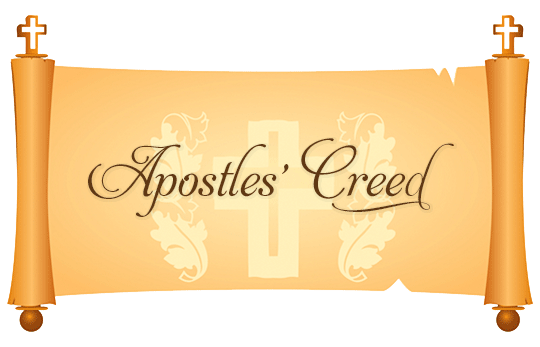Bible Question:
What is the Apostles' Creed of the third or fourth century A.D.?
Bible Answer:
The Apostles Creed is the most loved and well-known creed in the Christian Church. It is considered the Creed of creeds of the Christian faith. It is a statement of essential doctrines of the Christian faith. The early church father Rufinus of Aquileia (A.D. 340-405) wrote A Commentary On The Apostles’ Creed. In it he states,
And for this reason, the tradition continues, the Creed is not written on paper or parchment, but is retained in the hearts of the faithful, that it may be certain that no one has learned it by reading, as is sometimes the case with unbelievers, but by tradition from the Apostles.[1]
Then he proceeds to teach each phrase of the creed in forty-eight sections. Since no copies of the creed were written prior to his writing it is conjectured that the creed did not previously exist. But no one can convincing and objectively prove Rufinus wrong. Yet, it is clear that the creed did not exist in written form prior to his writing.[2]
The creed is primarily a doctrinal statement about the virgin birth, pre-cross suffering, crucifixion, burial, resurrection and ascension of Christ.

Here is the Apostles’ Creed of the third or fourth century.
Apostles’ Creed (before A.D. 340)
I believe in God, the Father almighty, creator of heaven and earth.
I believe in Jesus Christ, his only Son, our Lord.
He was conceived by the power of the Holy Spirit and born of the virgin Mary.
He suffered under Pontius Pilate,
was crucified, died, and was buried.
He descended to the dead.
On the third day he rose again.
He ascended into heaven,
and is seated at the right hand of the Father.
He will come again to judge the living and the dead.
I believe in the Holy Spirit, the holy catholic Church, the communion of saints, the forgiveness of sins, the resurrection of the body, and the life everlasting. Amen
The first three sentences and the last sentence of the creed are a statement of belief in God the Father, God the Son and the Holy Spirit. Then the creed affirms that Jesus Christ, God the Son, was born in human flesh and suffered in a variety of ways at the direction of Pontius Pilate. Historical records, written by Pontius Pilate, once existed that affirmed the gospel records of Jesus Christ’s miracles, sufferings and crucifixion.
The middle of the creed reveals that the early Christians believed Jesus died as a result of crucifixion. The next sentence seems to refer to 1 Peter 3:18-20 where we are told the Jesus visited the demonic forces in the abyss. The next line indicates that He was resurrected three days later which means He arose on Sunday (Matthew 28:1). Later He ascended to heaven and now sits in a position of authority with the Father.
The conclusion of the creed is a warning that Christ will be our judge in the future. He will judge those who had died and those who are still alive when He comes. The creed concludes with a flurry of statements. The reference to the “holy catholic church” does not mean the Roman Catholic Church. The word “catholic” means “universal.” That is, “holy catholic church” refers to all Christians around the world and from the past. The final statements teach that our sins can be forgiven through Christ resulting in resurrection and eternal life. It is a positive statement of faith about Christ and eternal life through Him.
Conclusion:
Earle Cairns states,
The Apostles’ Creed is the oldest summary of the essential doctrines of Scripture that we have. It was not written by the apostles but certainly embodied the doctrines that they taught. It was in use in Rome before 340. The creed was used as a baptismal formula from very early times . . . This creed, which is definitely Trinitarian, gives attention to the person and work of each of the three persons of the Trinity.[3]
He is of the opinion that the apostles did not write the creed, but as stated above Rufinus of Aquileia claims that the creed was communicated orally prior to his writing. He seems to suggest that it was communicated orally for the purposes of security.[4]
References:
1. Peter Schaff. St. Rufinus. A Commentary On The Apostles’ Creed, Section 2. Nicene And Post-Nicene Fathers. Hendrickson Publishers. 1995. Second Series, vol. 3. p. 543.
2. McClintock and Strong. Cyclopedia of Biblical Theological, and Ecclesiastical literature. Baker Books. 1981. vol. 2. p. 560.
3. Earle E. Cairns. Christianity Through The Centuries. Zondervan. 1996. p. 114.
4. Schaff. Ibid.
Suggested Links:
What is the Episcopalian Creed?What is the Nicene Creed of A.D. 325?
What are the Eighteen Articles of Faith of 1833?
What is the Chalcedonian Creed of A.D. 451?
What is the Athanasian Creed of A.D. 570? – Symbolum Quicunque
Pontius Pilate
During what years was Pontius Pilate governor of Judea?
What happened to Pontius Pilate after the death of the Lord Jesus Christ?
Searching For God